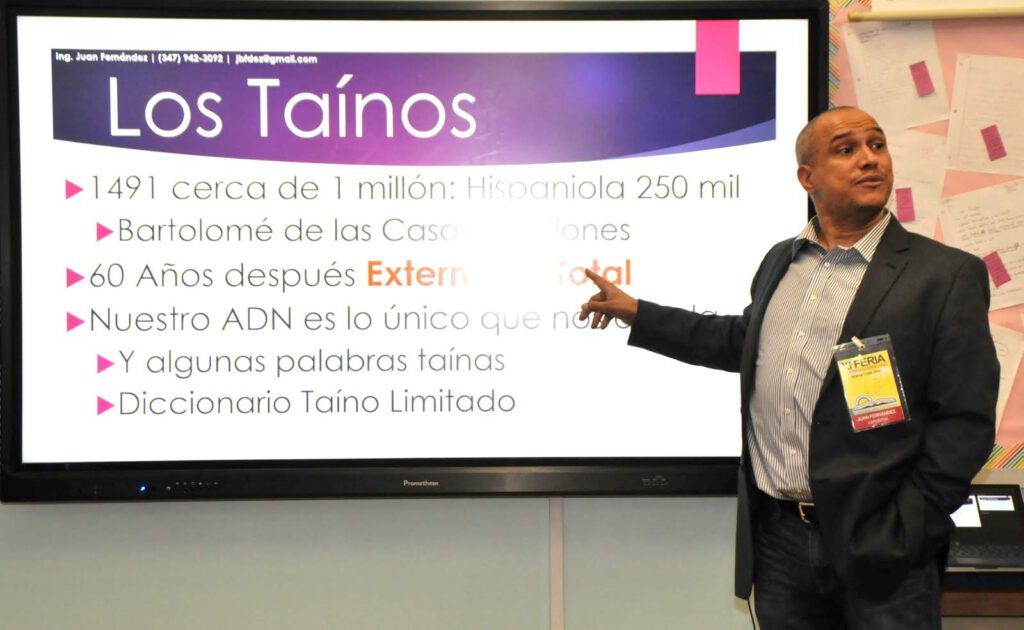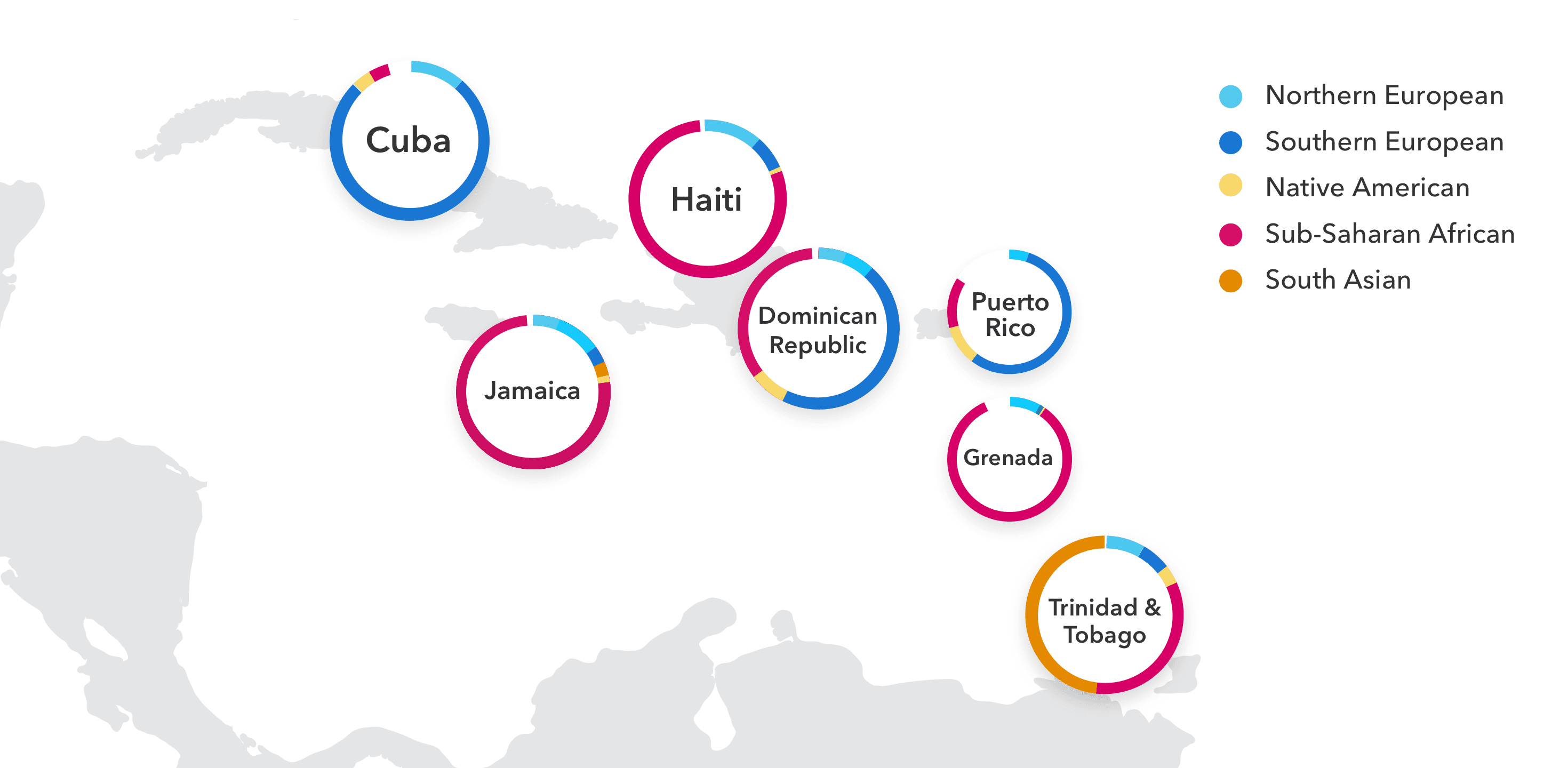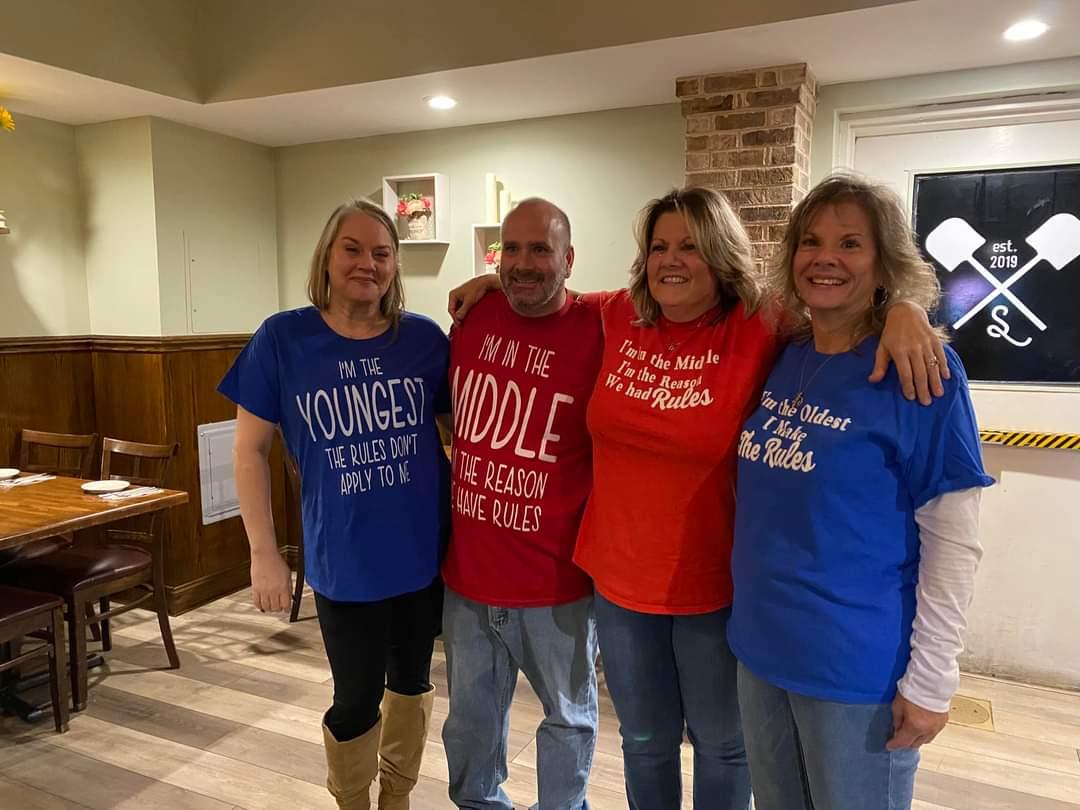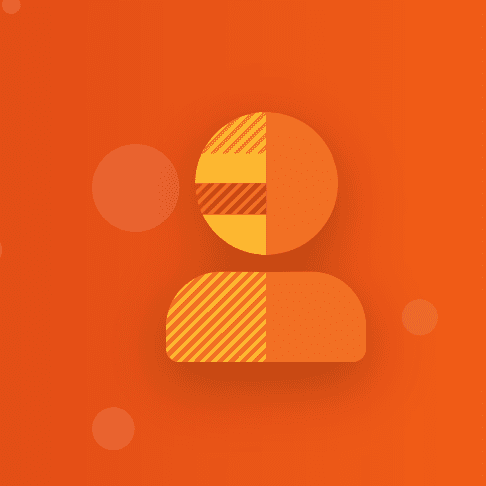Juan Fernandez had made many presentations about his Dominican heritage and the island’s Native Taíno population. But he’d never been caught off-guard by such a simple and direct question before:
“Do you actually have any Taíno ancestry?”
Thus launched a journey of discovery for Juan — to find out about his ancestors and, in turn, his own identity.

Juan Fernandez during one of his presentations.
Starting with newly released genetic research (see Sidebar), Juan found that Taíno DNA is, indeed, found throughout people of Caribbean descent. And then, after purchasing a kit from 23andMe, Juan awaited the moment of truth — was the Taíno story also his own?
A few weeks later, he opened the results on his computer screen. Sure enough, Juan had 10 percent Native American ancestry — and the answer to the question that had launched his journey.
Why Ancestry Matters
Native Caribbean ancestry, primarily Taíno, is still found among Puerto Ricans, Cubans, and Dominicans.
Researchers showed this definitively in 2018 by extracting DNA and sequencing the first ancient human genome from the Caribbean. This offered clear genetic evidence linking the ancient Taíno people to those with Caribbean ancestry living today.
On average, Puerto Ricans have around 12 percent of this Taíno ancestry. But over 60 percent of their maternal-line ancestry is of Taíno origin.
Interestingly, evidence of Taino ancestry is almost completely absent from the islands formerly controlled by Britain and France, such as Jamaica and Haiti.
While the Ancestry Composition statistic pleased Juan, the exact figure was less important than the two generational forces it represented:
First, it meant that the Taíno legacy had survived. This despite being declared extinct by Spanish colonists at the end of the 16th century. Neither enslavement nor disease had fully extinguished a population that once numbered in the hundreds of thousands across the Caribbean.
And second, the discovery represented a bridge from Juan’s past to his future. A father of three, he had noticed an “invisible barrier” starting to form between his kids and their Dominican heritage. So the chance to share the full richness and complexity of their ancestry was a chance to break through this intergenerational blockade.
What’s Next
Empowered by his new genetic insight, Juan plans to share the story of the Taíno with even more people — including at the Cultural Commission of the Dominican Republic in New York.
“This story doesn’t belong to me,” said Juan. “It belongs to the 1.1 million Dominicans in the US.”
As for himself, Juan feels that his 23andMe experience “gave me the critical meaning to my search for identity. Being part of any diaspora leaves you in a cultural limbo; a foreigner in your country and a foreigner in the motherland. Now I know where I belong.”
Want to make your own ancestry discovery? Check out your Ancestry Composition – including the newly released Recent Ancestry in the Americas feature for people with Caribbean and Latin American heritage. Or if you’re new to 23andMe, purchase a kit to start your own journey.




